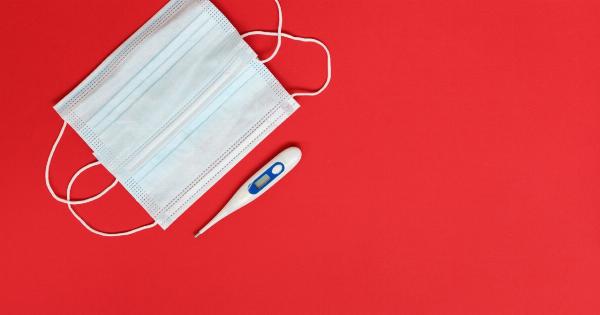Cancer is a complex disease that affects millions of people worldwide. It is characterized by the uncontrolled growth and spread of abnormal cells in the body.
While there are several factors that contribute to the development of cancer, including genetics and environmental exposures, there are also steps you can take to cut your risk of cancer in half. By making certain lifestyle changes and adopting healthy habits, you can significantly reduce your chances of developing this devastating disease. In this article, we will explore ten strategies to help you slash your risk of cancer by 50%.
1. The Importance of a Healthy Diet
Eating a nutritious diet plays a key role in lowering your risk of cancer. Incorporate plenty of fruits, vegetables, whole grains, and lean proteins into your meals.
Opt for organic and locally sourced produce whenever possible to minimize exposure to harmful pesticides and chemicals. Avoid processed foods, sugary snacks, and drinks, as these have been linked to an increased risk of cancer.
2. Regular Physical Activity
Engaging in regular physical activity can significantly decrease your chances of developing cancer.
Whether it’s taking a brisk walk, going for a swim, or participating in a dance class, aim for at least 150 minutes of moderate-intensity exercise every week. Physical activity helps regulate hormone levels and boosts your immune system, both of which are crucial for cancer prevention.
3. Maintain a Healthy Weight
Excess weight is a risk factor for several types of cancer, including breast, colon, and kidney cancer. Achieving and maintaining a healthy weight can reduce your cancer risk.
Incorporate portion control into your meals, limit high-calorie foods, and prioritize regular exercise to maintain a healthy weight range.
4. Quit Smoking
Smoking is a leading cause of cancer and is responsible for a significant number of cancer-related deaths. Quitting smoking is one of the most effective ways to reduce your cancer risk.
Seek support from healthcare professionals, join a quitting program, or try nicotine replacement therapies to increase your chances of successfully quitting.
5. Limit Alcohol Consumption
Excessive alcohol consumption has been linked to an increased risk of various cancers, including those of the liver, breast, and throat. Limit your alcohol intake to moderate levels.
Women should consume no more than one drink per day, while men should have no more than two drinks per day.
6. Protect Yourself from the Sun
Excessive exposure to the sun’s harmful ultraviolet (UV) rays can significantly raise your risk of skin cancer.
Protect yourself by wearing sunscreen with a high sun protection factor (SPF), seeking shade during peak sun hours, and wearing protective clothing, such as hats and sunglasses, when outdoors.
7. Get Vaccinated
Some cancers, such as cervical and liver cancer, can be prevented through vaccination. Talk to your healthcare provider about vaccines that can help reduce your risk.
For example, the human papillomavirus (HPV) vaccine can protect against various strains of the virus that can cause cervical, anal, and oral cancers.
8. Practice Safe Sex
Engaging in unprotected sex or having multiple sexual partners can increase your risk of certain sexually transmitted infections (STIs), such as human immunodeficiency virus (HIV) and human papillomavirus (HPV).
These infections can elevate your chances of developing certain cancers, including cervical and anal cancer. Practice safe sex by using condoms and getting regularly tested for STIs.
9. Stay Hydrated
Drinking an adequate amount of water each day is essential for maintaining overall health and reducing your cancer risk. Water helps flush out toxins from your body and promotes healthy cell function.
Aim to drink at least eight glasses of water daily, or more if you live in a hot climate or are physically active.
10. Regular Health Check-ups and Screenings
Regular health check-ups and screenings can aid in the early detection of cancer or precancerous conditions.
Follow recommended guidelines for screenings such as mammograms, Pap smears, colonoscopies, and prostate exams based on your age, gender, and family history. Early detection allows for more effective treatment options and a higher chance of survival.
Conclusion
Reducing your risk of cancer by 50% requires a multifaceted approach.
By making lifestyle changes such as adopting a healthy diet, staying physically active, avoiding tobacco and excessive alcohol consumption, and protecting yourself from the sun, you can significantly decrease your chances of developing this disease. Additionally, getting vaccinated, practicing safe sex, staying hydrated, and undergoing regular health check-ups and screenings are essential preventive measures.
Remember, prevention is always better than cure, and taking these proactive steps can make a significant difference in slashing your risk of cancer.































